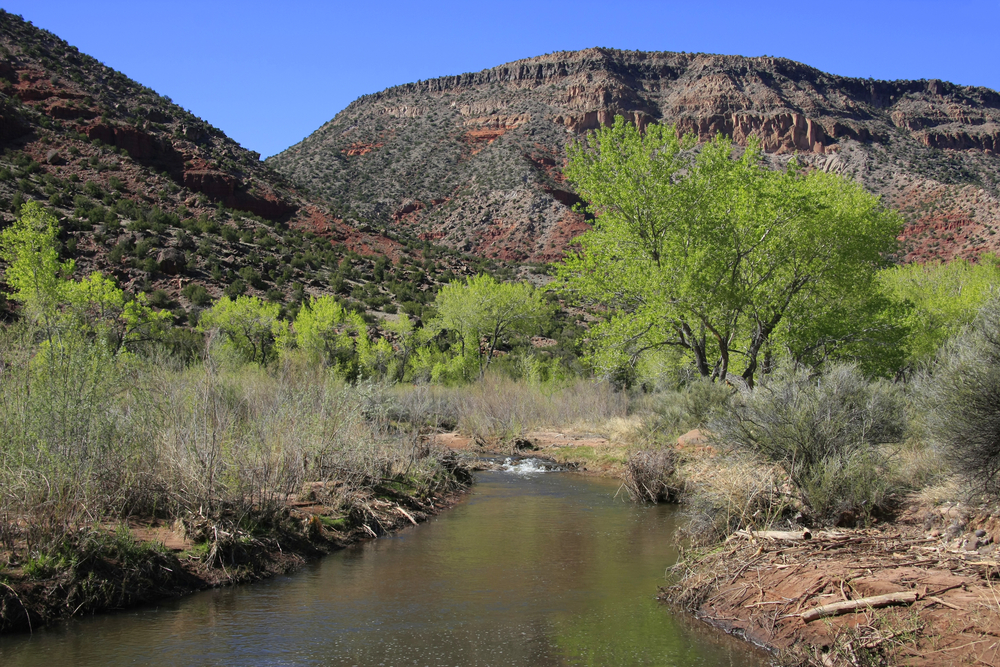New Mexico is known as the “Land of Enchantment,” but it is also a state without a lot of bodies of water. When the Trump administration changed the “navigable waters” definition to include only waters that flowed year-round, both New Mexico and Arizona were particularly hard hit, as the majority of their waterways don’t have continuous flow to another waterway, meaning those waterways were left without federal protection under the Clean Water Act (CWA).
The Trump-era definition, which became effective on June 22, 2020, spurred a number of lawsuits, including one filed by the Navajo Nation against the EPA and the U.S. Army Corps of Engineers, in the U.S. District Court for New Mexico.
The pueblos of Laguna and Jemez in New Mexico joined the list of challengers to the 2020 rule on March 29, 2021.
Redefining WOTUS
“The Pueblos argue, in the lawsuit, that the 2020 rule ignores the U.S. Government’s trust responsibilities to Indian tribes and violates the Administrative Procedure Act and intent of the Clean Water Act,” according to a press release issued by the University of New Mexico (UNM), whose Clinical Law Program is representing the pueblos. The 2020 rule strips federal protections from a significant proportion of streams and may hamper the pueblos’ efforts to regulate upstream polluters that affect waters on their lands.
On June 22, 2021, in the Navajo Nation case, the federal government asked the New Mexico federal court to remand the Navigable Waters Protection Rule (NWPR) to allow the EPA time to pursue new rulemaking to redefine Waters of the United States (WOTUS).
The EPA and the Army Corps of Engineers previously announced their plans to redefine WOTUS on June 9, 2021.
Short-Term Concerns
In that press release, the agencies stated, “Upon review of the [NWPR], the agencies have determined that the rule is significantly reducing clean water protections. The lack of protections is particularly significant in arid states, like New Mexico and Arizona, where nearly every one of over 1,500 streams assessed has been found to be non-jurisdictional. The agencies are also aware of 333 projects that would have required Section 404 permitting prior to the Navigable Waters Protection Rule, but no longer do.”
“Water advocates see the announced change as an encouraging move, but warned that it will take time to repeal and replace the rule. In the meantime, they say potentially harmful projects already approved will move forward,” according to the Santa Fe New Mexican.
“I think many people remain concerned that the Trump rule remains in place, and that waters can be injured because of it,” says Cliff Villa, associate professor and supervising attorney for UNM’s Natural Resources and Environmental Law Clinic, in the article.
Villa guided the UNM students who filed the lawsuit for the Laguna and Jemez pueblos and are concerned about the length of time it can take the federal government to overturn regulations.
“It took the Trump administration three years to undo the Obama-era clean water rule, although some delay was caused by a former EPA head’s missteps while trying to rush it through,” Villa notes.
Clear as Mud
The definition of WOTUS is one of the most fiercely contested and misunderstood rules under the EPA’s jurisdiction. And, to make it even more confusing, that jurisdiction is shared with the Army Corps of Engineers.
One aspect of the WOTUS definition has always been clear: It applies to U.S. oceans, major navigable rivers, lakes, and any connected waterways. What is not so clear is how to handle wetlands and loosely connected waterways such as streams that are dry for part of the year.
On June 9, 2021, the Department of Justice filed a motion requesting remand of the NWPR, according to the EPA press release.
“‘If the rule is repealed, the regulations will revert to more stringent ones enacted in 1987,’ said Charles de Saillan, staff attorney for the New Mexico Environmental Law Center,” the Santa Fe New Mexican says.
“‘Congress should intervene and create well-defined and permanent updates to the Clean Water Act to stop the political seesawing that happens every change of administration,’ de Saillan said.
“‘Congressional action would be much better than having the U.S. Supreme Court make rulings on it,’ de Saillan said. ‘The last high court decision on which waters merited federal protection was ambiguous, causing more confusion and legal battles,’ he said.
“‘The Supreme Court is not the place to resolve this,’ de Saillan said. ‘That would be unfortunate,’” the Santa Fe New Mexican reports.

